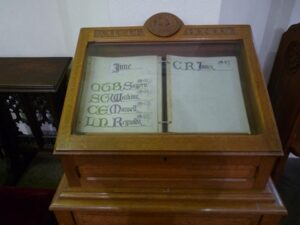Within the confines of St. Katherine’s Church at Milford Haven is a wide array of memorials to local servicemen who fell during both World Wars.
The Church holds a memorial sedilia to Captain William Sanders, VC, DSO and several fine stained glass windows: one in memory of Lieutenant Edmund Sydney Howells who fell during WW1 and another in memory of Lieutenant-Commander Frederick Harold Williams, who fell during WW2. A framed religious picture bears the name of Lieutenant Tom Cecil Haydn Berry, who fell in France in 1918; while there is a similar framed religious picture for a Chorister, Arthur Merchant Jeffs, who also fell in 1918. There is also a separate plaque for William Thomas Prior.
The Rood Screen also serves as a War Memorial, being carved with the names of the parishioners who fell during the Great War. There is also a fine parchment memorial book, bearing the names of the men who fell during World War Two. All of these men are commemorated on the main Milford Haven War Memorial on Hamilton Terrace and on the War Memorial cross which is situated outside the Church. (The WW1 Memorial Rood Screen is on a separate page on this website.)
The most striking of the memorials within the Church is the Altar of Remembrance, which is the centrepiece to a collection of original wooden grave markers from battlefield cemeteries in France, Belgium, Iraq, and at Milford itself. These markers were collected by Canon Edmund Howells, whose own son Edmund had been killed during the war, after the CWGC replaced the crosses with the now familiar carved Portland Stone headstones in the 1920’s, and were dedicated at a service in the Church in July 1924. The photographs of the memorials are all courtesy of Mike Berrell.
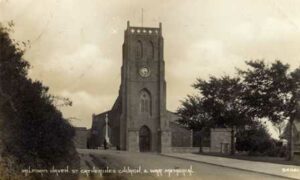
The Great War, 1914-1918 – Individual Memorials & Grave Markers
Tom Cecil Haydn Berry, Captain, Welsh Regiment. Tom was born at Stone, Staffordshire on 4 August 1892, the son of Thomas William and Henrietta Berry. The family later resided at Lyndhurst Pen-Y-Graig, Rhondda. Tom was educated at Exeter School, before gaining his B.A. at Oxford, and becoming a Scholar and Exhibitioner at Exeter College, Oxford. Tom was commissioned into the 5th Battalion, Welsh Regiment on 1 December 1914. Tom had served in France with the 3rd (City of London) Battalion, Royal Fusiliers, and was wounded by shrapnel in the leg at Wytschaete on 7 June 1917. Tom was hospitalised in England. He was posted back to France in August 1918, and joined the 14th Battalion, Welsh Regiment, which was attached to 114 Brigade, 38th (Welsh) Division. Tom then served with the battalion during the famous Ancre crossing of 21 August, and in the subsequent drive across the old Somme battlefields. He was killed in action during the Battle of Morval on 30 August 1918, aged 26, and is buried at Morval British Cemetery, France.
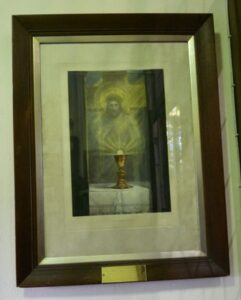
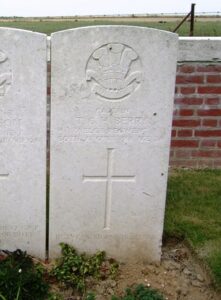
Edmund Sydney Howells, Lieutenant, Royal Flying Corps. Edmund was the son of Canon Edmund and Mrs. Emily Maud Blanche Howells, of The Vicarage, Milford Haven. He had previously served with the Welsh Regiment in France, before becoming a pilot in 120, Squadron Royal Flying Corps. The Squadron was formed at Lympne in January 1918, and trained with the DH 9, but Edmund was killed in an accident while flying Armstrong Whitworth FK 3 A1505, on 27 March 1918. Edmund was just 19 years old, and is buried at Milford Haven Cemetery. His Observer, Second Lieutenant John Armstrong, was also killed in the accident. Edmunds obituary in ‘Flight Magazine’ reads; ‘Lieutenant EDMUND SYDNEY HOWELLS, R.F.C., who was killed accidentally, while acting as flying instructor, on March 27th, was the eldest son of the Rev. E. Howells, B.D., vicar of Milford Haven. He was educated at the King’s School, Worcester, where he represented the school on the river, and was passing from the sixth form to Oxford when the war broke out. He received a commission in the Welsh Regiment directly from the O.T.G., and served with it in France, being wounded in 1916. On recovery he returned to his regiment on another front, where he was transferred to the R.F.C., and served for some time in Egypt. Last year he was recalled to act as instructor at home.’ Edmund is commemorated on a stained glass window in the church.
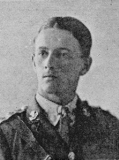
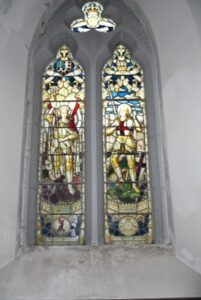
William Edward Sanders, VC, DSO, Lieutenant Commander, Royal Naval Reserve. William was the son of Edward Helman Cooke Sanders and Emma Jane Sanders, of Russell, Bay of Islands, New Zealand. He had worked his way swiftly through the ranks of the Mercantile Marine at an early age, and held the Extra Master’s Certificate, before serving with the RNR, aboard various Q-Ships based at Milford. His story is told in more detail on the Pembrokeshire Heroes page of this site, but William had gained the Victoria Cross and Distinguished Service Medal by the time of his death, when his Q-Ship, HMS Prize was sunk by the German submarine U-48 on 14 August 1917. William was 34 years old, and is commemorated on the Plymouth Naval Memorial, Devon. The Sedilia below, in St. Katherine’s Church, is dedicated to Sanders.
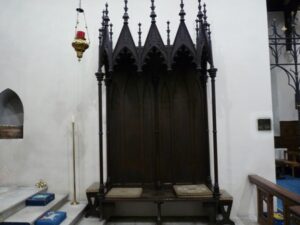
Altar of Remembrance Grave Markers, The Great War, 1914-1918
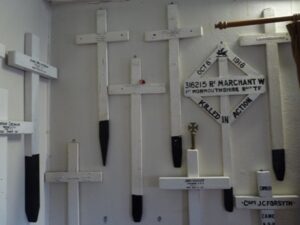
George Henry Harris Brownhill, Private, 18694, Duke of Edinburghs Wiltshire Regiment. George was the son of George Henry and Maria Brownhill, of 8, Brick House, Pill, Milford Haven. He enlisted at Milford into the Welsh Regiment, but was then posted to the 5th Battalion, Wiltshire Regiment, which formed part of 40 Brigade, 13th (Western) Division. The Division had fought at Gallipoli, and remained there until being evacuated in January 1915, from where it moved to Egypt, where it was posted to the Suez Canal defences. In 1916 the Division moved to Mesopotamia, and took part in a long and terrible struggle against the Turks for the remainder of the war. George died here on 28 August 1918, aged 23, and is buried at Baghdad (North Gate) War Cemetery.
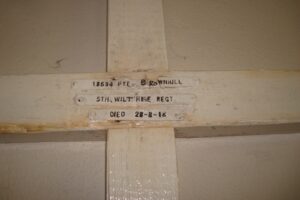
James Walter Buck, Deck Hand, DA/15469, Royal Naval Reserve. James was born at Caister, Norfolk on 22 February 1878, the son of George Walter Buck and Mary Buck. He resided with his wife Gladys Ethel Buck, at 10, Warwick Road, Milford Haven. James was serving aboard HM Drifter Petrel. James died after the war, on 10 March 1919, aged 38, and is buried at Milford Haven Cemetery.
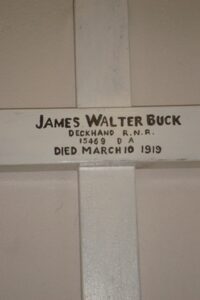
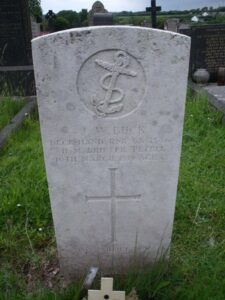
John Charles Burr, Private, 54031, Welsh Regiment. John was born in Hull in 1885, the son of John and Annie Burr. By 1901 the family was residing at 30, Dartmouth Street, Milford Haven, where John’s father ran his own business as a Fish Merchant. John enlisted into the Army at Milford, and was posted to the 14th Battalion, Welsh Regiment as a reinforcement. The battalion was known as the Swansea Pals battalion, and was in France as part of 114 Brigade, 38th (Welsh) Division. John would have joined the battalion after the fighting at Mametz Wood, and moved with the battalion to new positions north of Ypres, near Boesinghe, in August 1916. Here the Welsh Division took over the line running along the Canal Bank, and were to remain here for the coming twelve months leading up to the Battle of Passchendaele. John though was killed in action while the Swansea Pals were in the line on 1 November 1916, aged 31. He was buried at Essex Farm Cemetery, Belgium.
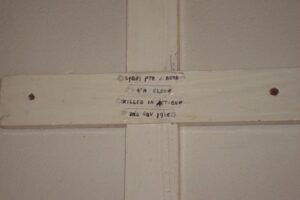
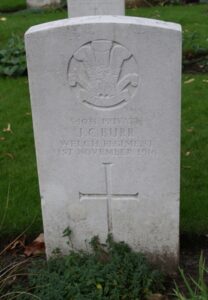
James Cobban Forsyth, Captain, Canadian Army Medical Corps. James was born at Middlesex County, London, Ontario on 3 March 1871. He resided at 16, Yarwood Street, St Thomas, Ontario prior to the war, where he was a physician. James enlisted at Calgary on 30 December 1915 into the Canadian Army Medical Corps, and was posted to France, joining the staff of the 1st Canadian General Hospital. On 8 September 1918 James was aboard the troopship S.S. Missanabie, which was on route from Liverpool for New York, when she was torpedoed by the German submarine UB-87, and sank with the loss of 45 lives. James died of wounds suffered that same day. He was 58 years old, and is buried at Milford Haven Cemetery.
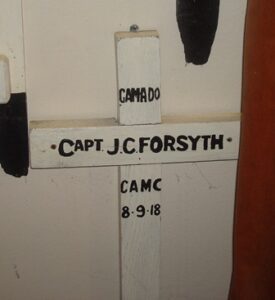
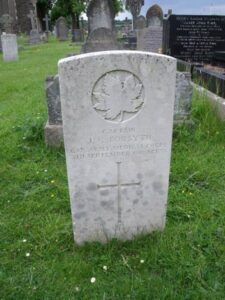
Alexander Clark Garden, Deck Hand, DA/3984, Royal Naval Reserve. Alexander was born on 6 September 1878, the son of Alexander Garden, of Lossiemouth, Morayshire. He was also serving as Deck Hand aboard HM Drifter Ferndale when she was lost on 27 December 1915. Alexander’s body was recovered from the sea, and he is buried at Milford Haven Cemetery. His brother John also died aboard Ferndale.
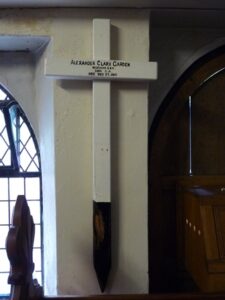
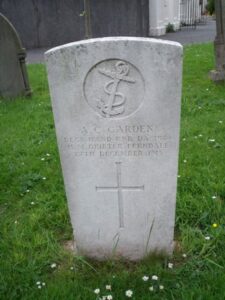
Herbert Arthur Greenacre, Trimmer, TS/1700, Royal Naval Reserve. Herbert was born on 23 October 1871, the son of George and Louisa Greenacre, of Martham, Norfolk. He served as Trimmer aboard HM Trawler Weymouth II. Herbert was killed aboard Weymouth II on 3 June 1915, aged 48. He is buried at Milford Haven Cemetery.
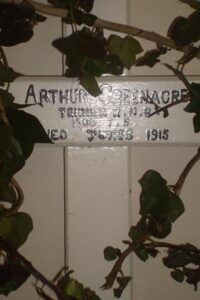
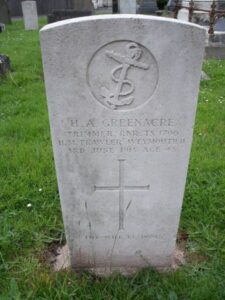
John Harvey, Engineman, ES/99, Royal Naval Reserve. John was born at Aberdeen on 10 November 1882, and was the Husband of Catherine Harvey, of 10, Pill Road, Milford Haven. He served aboard HM Trawler Falmouth III, which was used for minesweeping duties around Dover Docks, and was killed when she sunk after striking a mine laid the previous morning by German submarine UC-5, on 19 November 1915. John was 41 years old, and is buried at Milford Haven Cemetery.
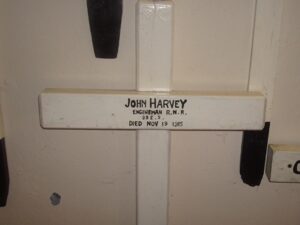
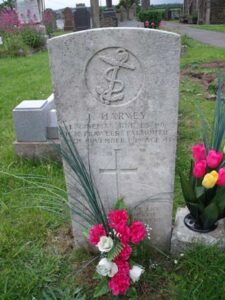
Stratton Leonard Hodgkinson, Private, 48828, South Wales Borderers. Leonard was the son of Mrs. Mary Annie Hitchings (formerly Hodgkinson), of 195, Robert Street, Milford Haven. He enlisted at Porth into the 8th Welsh. He then transferred into the 1st Battalion, South Wales Borderers at some time, which was in France as part of 3 Brigade, 1st Division. Leonard was killed in action during the final phase of the war, during the drive towards the Hindenburg Line on 1 October 1918. He is buried at Savy British Cemetery, France. His brother Thomas also fell.
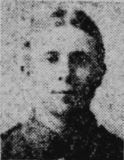
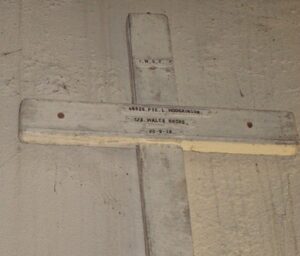
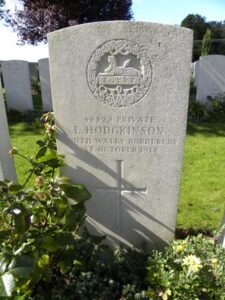
George Robert Hooper, Lance Corporal, 150909, Royal Engineers. George was the son of Richard Henry Hooper and Mary Jane Hooper, of Plymouth. He married Kate West in 1908, and the couple resided at 7, Warwick Road, Milford Haven. George had served with the 1st Volunteer Company, Welsh Regiment for several years, and enlisted at Milford into the Inland Water Transport Company of the Royal Engineers, probably due to his experience working at Milford Docks. He was posted to France on 27 April 1916, where he worked at Dunkirk docks. George is recorded as having died of wounds at Dunkirk on 3 September 1917 after having been struck in the head by shrapnel during bombing of Dunkirk. He was 29 years old, and is buried at Dunkirk Town Cemetery, France.
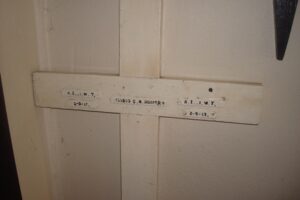
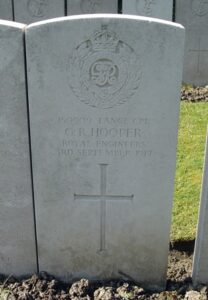
Thomas Henry James, Private, 44331, Welsh Regiment. Thomas was the son of Harry and Edith James of 199, Robert Street, Milford Haven. He enlisted at Milford into the Army, and was posted to the 17th Battalion, Welsh Regiment, which formed part of 119 Brigade, 40th (Bantam) Division. This Division was formed between September and December 1915, composed of bantam units and others which had a mixture of regulation-height and shorter men. Weeding out of very under-sized or unfit men delayed the training programme, and it was not until late Spring 1916 that the Division was ready to proceed on active service. The Division moved to France between the 1st and 9th June, and moved to the front near Loos. Late in 1916 they moved south to the Somme, and fought at the Battle of the Ancre, and remained in the area over the winter. In March, 1917 the Germans withdrew to their shortened line, called the Hindenburg Line, and the 40th Division were one of the Divisions that followed the withdrawal. Thomas was killed during this period of stagnant warfare, on 5 September 1917. He was 23 years old, and is buried at Gouzeaucourt New British Cemetery, France.
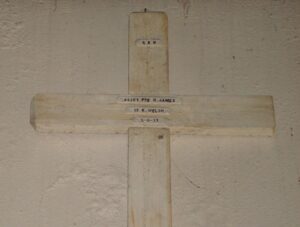
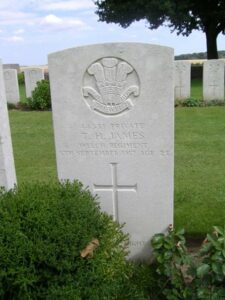
Arthur Merchant Jeffs, Private, 633841, London Regiment. Arthur was the son of Daniel and Ellen Jeffs, of Milford Haven. He enlisted at Milford into the Pembroke Yeomanry, and was posted to the 15th Battalion, London Regiment, before being transferred into the 2/20th Battalion (Blackheath and Woolwich), London Regiment, which was attached to 180 Brigade, 60th Division. The division moved to France in June 1916, but within months was transferred to Salonika. During July 1917 it transferred to Palestine and took part in the Third Battle of Gaza and the capture of Jerusalem. Arthur suffered several bouts of sickness in Palestine, and must have been relieved when the battalion moved to France in May 1918, joining 185 Brigade, 62nd Division. Arthur was killed during the push forward towards the Hindenburg Line on 30 August 1918, during the German counter attacks at Vraucourt and Vaulx-Vraucourt. He was 30 years old, and is buried at Vaulx Hill Cemetery, France. Arthur is also commemorated on a memorial inside the church which states that he had been a chorister there for sixteen years. His original wooden grave marker is also held in the church.
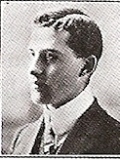
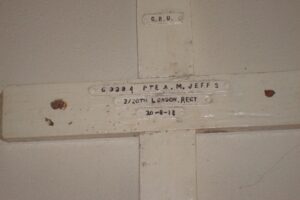
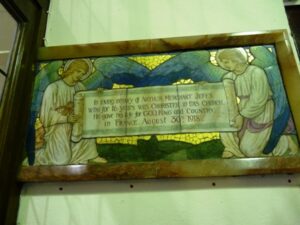
Alec John Lee, Signaller, Z/7296, Royal Naval Volunteer Reserve. Alec was born on 13 July 1899, the son of William Edward and Annie Martha Lee, of 12, Foots Row. Sleaford Street, Battersea, London. He served as a Signaller aboard the S.S. Hirano Maru. Hirano Maru was a Japanese Liner that was torpedoed by the German submarine UB-91 in a strong gale in the Irish Sea, and sunk on 4 October 1918. There were over 320 people on board, including 200 passengers. Only 28 people survived the sinking. The 19 year old Alec Lee was one man whose body was recovered and identified, and he was buried at Milford Haven Cemetery. During November eight bodies were washed up at Dale, and buried in a communal grave, which is now marked by a Memorial Cross, erected by the villagers.
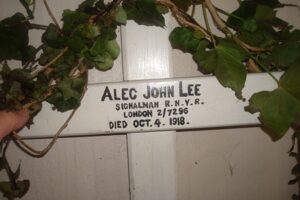
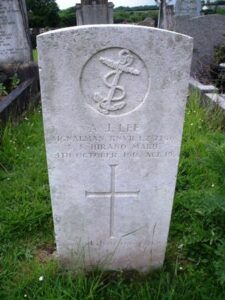
William John Marchant, Rifleman, 316215, Monmouthshire Regiment. William was the son of Henry and Sarah Ann Marchant, of 10, Brick Houses, Pill, Milford Haven. He enlisted at Milford into the Army, and joined the 1st Battalion, Monmouthshire Regiment, which was the Pioneer Battalion to the 46th (North Midland) Division. The Division had fought at Loos in 1915 and Gommecourt in 1916, and also at Arras in 1917. Their greatest moment came in 1918 when they took part in the advance to the Hindenburg Line, and captured a vital crossing at Riqueval. William was killed during the advance to the Hindenburg Line on 8 October 1918. He was just 18 years old, and is buried at Sequehart British Cemetery No. 1, Aisne, France.
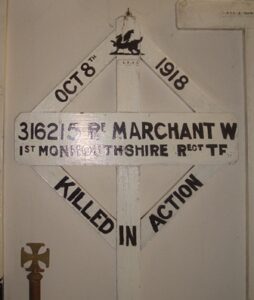
James Hubert Mathias, Private, 14326, Welsh Regiment. James was the son of Arthur and Martha Maria Mathias, of 7, Greville Road, Milford Haven. He enlisted at Milford into the Army, and joined the 11th Battalion, Welsh Regiment, known as the Cardiff Pals, attached to 67 Brigade, 22nd Division. The Division crossed to France in early September 1915, with all units being concentrated near Flesselles by 9 September. However it’s stay in France was to be very short, as on 27 October 1915 the Division, having been moved by train to Marseilles, began to embark for Salonika. It completed concentration there in November, although the final artillery units were still coming in as late as 13 December 1915. It remained in the theatre for the rest of the war, taking part in the Retreat from Serbia during December, 1915. Between 10 to 18 August 1916 they fought at the battle of Horseshoe Hill, then between 13 to 14 September 1916 at the battle of Machukovo. Between 24-25 April and 8-9 May 1917 the Division fought at the battle of Doiran, and the lines then remained static for several months. James became ill with malaria during this peaceful period, and returned home for treatment, sadly dying on 26 June 1918. He was 31 years old, and is buried at Milford Haven Cemetery.
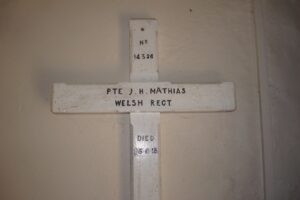
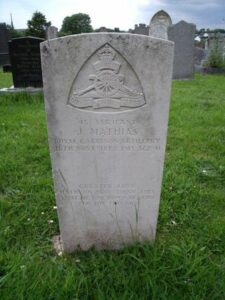
John Mathias, Sergeant, 45, Royal Garrison Artillery. John was the Husband of Mary Mathias, of 175, Robert Street, Milford Haven. He had enlisted at Milford into the Royal Garrison Artillery, and joined their Pembroke Company, on Home Defence at Milford. He died on 18 November 1915, aged 41, and is buried at Milford Haven Cemetery.
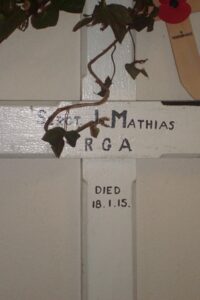
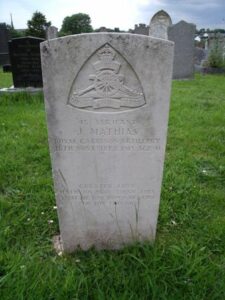
Peter William Webber Medway, Deck Hand, DA/2449, Royal Naval Reserve. Peter was born on 17 April 1887, the son of William and Susan Medway of Brixham, Devon. He had lived at Milford for several years prior to the war, and resided with his wife Annie Catherine Medway (nee Joyce), at 10, Vicary Street Pill, Milford Haven. He served aboard HM Trawler Evangel, and was drowned when she hit a mine of St. Anne’s Head and sank on 25 March 1917. Peter was 29 years old, and is buried at Milford Haven Cemetery.
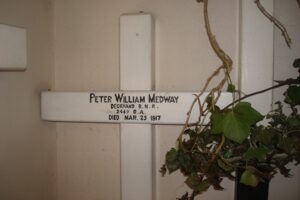
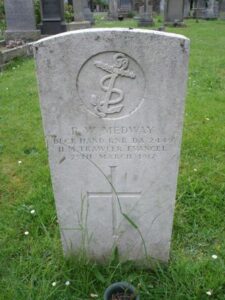
Henry Paxton Palmer, Pioneer, 46356, Royal Engineers. Henry was born on 8 May 1897, the son of Robert Paxton Palmer and Amelia Palmer, of 8, Bridge Street, Hakin. He enlisted at Milford into the Royal Engineers and was posted to their 23rd Signal Company, which was attached to the 1st Division. The Division saw action during the epic retreat from Mons, and at First Ypres during 1914. In 1915 it fought at Loos, and was on the Somme in 1916. In the spring of 1917 the Division moved to Flanders, and it was here that Henry was killed on 27 May 1917. He was 20 years old, and is buried at Railway Dugouts Burial Ground, Belgium.
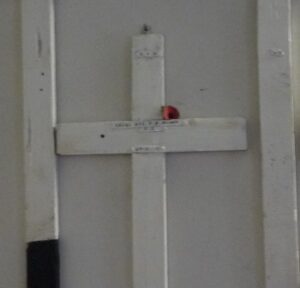
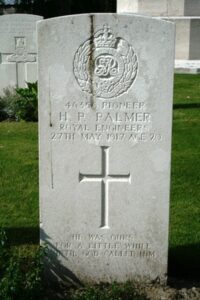
Charles Ralph, Trimmer, TS/2041, Royal Naval Reserve. Charles was born on 26 September 1897, the son of Charles Ralph and Jane McLeod Ralph, of 13, John Street, Lossiemouth, Morayshire. Charles served as Trimmer aboard HM Drifter Ferndale, and drowned when she was sunk on 21 December 1915. Charles was just 17 years old, and is buried at Milford Haven Cemetery.
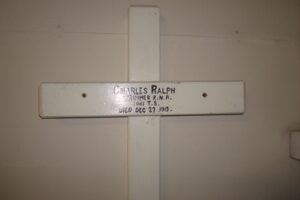
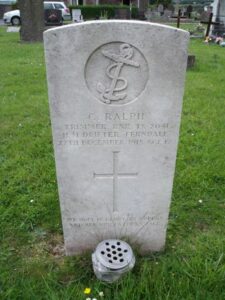
Albert James Thomas, Private, 26567, Royal Fusiliers. Albert was the son of Arthur and Mary Thomas, of 27, Priory Road, Milford Haven, and enlisted at Milford into the Army. Albert was posted to the 7th Battalion, Royal Fusiliers, part of 190 Brigade, 63rd (Royal Naval) Division. The Naval Brigades were originally sent to Antwerp and Dunkirk in September and October, 1914 to guard against invasion by the Germans. However Antwerp fell to the Germans soon after, and so many of the RND units were withdrawn to England. After a lengthy period of refit and training the Division moved to Egypt preparatory to the Gallipoli campaign. Landing on 25 April 1915, the Division fought throughout the Campaign on Gallipoli. They were transferred from the authority of the Admiralty to the War Office on 29 April 1916, and was redesignated the 63rd (Royal Naval) Division on 19 July 1916. The Division moved to France, arriving at Marseilles between 12 and 23 May 1916 and moved to positions on the Somme, where it took part in the Battle of the Ancre, which is where Albert was killed on 13 November 1916. He was 25 years old, and is buried at Ancre British Cemetery, Beaumont Hamel, France.
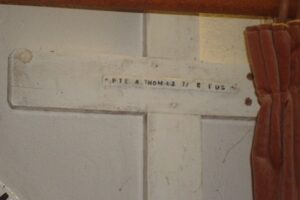
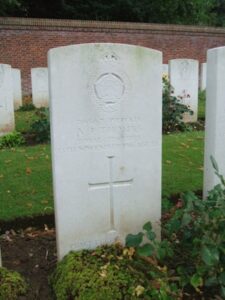
James Henry (Harry) Thomas, Lance Corporal, 17430, Royal Fusiliers. Harry was born at St Davids, the son of Dorothy Thomas. His father died when he was young, and Dorothy married William Orchard in 1899. The family moved to 1, Priory Hill, Milford Haven, where Dorothy gave birth to several other children, and Harry was raised as William’s own son. He enlisted at Haverfordwest into the Army, and was posted to France at some time in 1916, joining the 1st Battalion, Royal Fusiliers, which was attached to 17 Brigade, 6th Division. Harry probably saw his first action on the Somme, at the Battle of Flers-Courcelette, the Battle of Morval and the Battle of Le Transloy. The following year saw the division at Arras, where it fought at the Battle of Hill 70, and then during the Battle of Cambrai later in the year. In the spring of 1918 the Division was one of those hit by the German Offensive on the Somme, which had been launched on 21 March, and the Division took part in the Battle of St Quentin. Harry was killed during the build up to the German offensive, on 8 March 1918, aged 23. He is buried at Tincourt New British Cemetery, France.
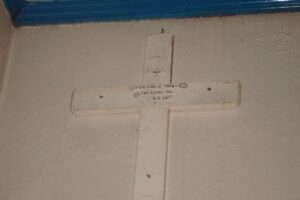
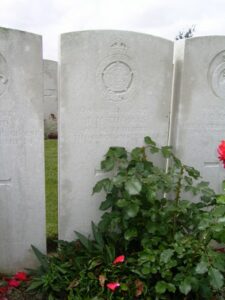
Thomas Edward White, Trimmer, TS/5619, Royal Naval Reserve. Thomas was born in London on 4 March 1890 but had worked at Milford for several years prior to the war, residing with his wife Mary Ann White, at Norton Hill, Neyland. He had served at HMS Idaho, and survived the war, sadly dying on 20 August 1919 aged 38. He is buried at Milford Haven Cemetery.
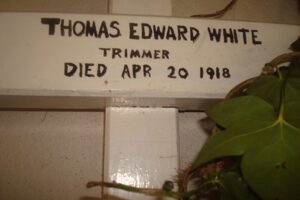
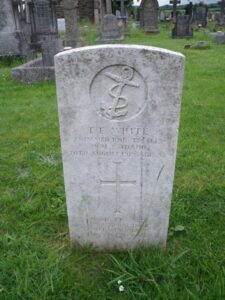
John Wiseman, Deck Hand, TS/3159, Royal Naval Reserve. John was born on 26 April 1878, the son of John and Mary Wiseman, of I, Donald Place, Forbes Street, Aberdeen. He served as Deck Hand aboard HM Drifter Progress, which was a patrol boat. John was found drowned at Milford on 24 July 1915, wedged between a boat and the harbour wall. He was 41 years old, and is buried at Milford Haven Cemetery.
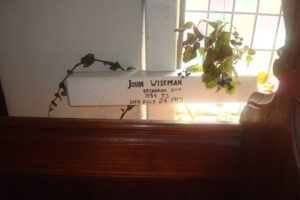
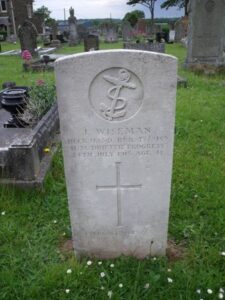
World War Two, 1939-1945 – Individual Memorials
William Thomas Prior, Fusilier, 4196946, Royal Welch Fusiliers. William was born on 7 December 1918, the son of Thomas and Rosamund Alice Prior, of Milford Haven. He worked for the Great Western Railway before joining the 2nd Battalion, Royal Welch Fusiliers. The battalion was stationed in India at the outbreak of war, and it was here that William died on 1 May 1940. He was 21 years old, and is buried at Delhi War Cemetery, India.
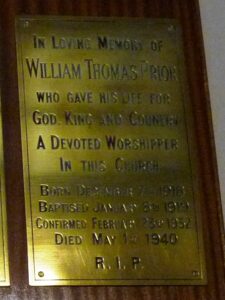
Frederick Harold Williams, Chief Engineer Officer, Merchant Navy. Frederick was the son of Joe and Julia Williams, of Condine, Hakin, and the Husband of E. E. Nora Williams, of Milford Haven. He served as Chief Engineer aboard MV British Security, a London registered vessel. Frederick lost his life when she was torpedoed and set on fire by the German submarine U-556 in the Atlantic, South of Cape Farewell 20 May 1941. She later sank three days later. She was on voyage from Curacao to Bowling via Halifax, Nova Scotia with a cargo of benzene and kerosene, as part of convoy HX 126 comprising of 29 ships. Frederick was 45 years old, and is commemorated on the Tower Hill Memorial, London. He is commemorated on a fine stained glass window within the church.
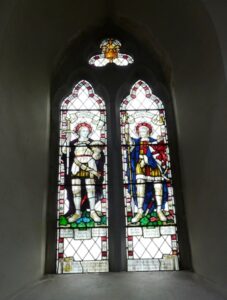
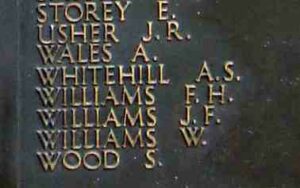
The Great War Memorial Rood Screen
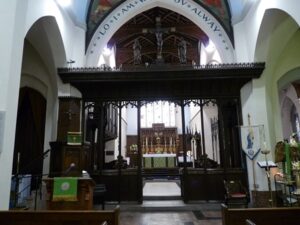
The World War Two Memorial Book
